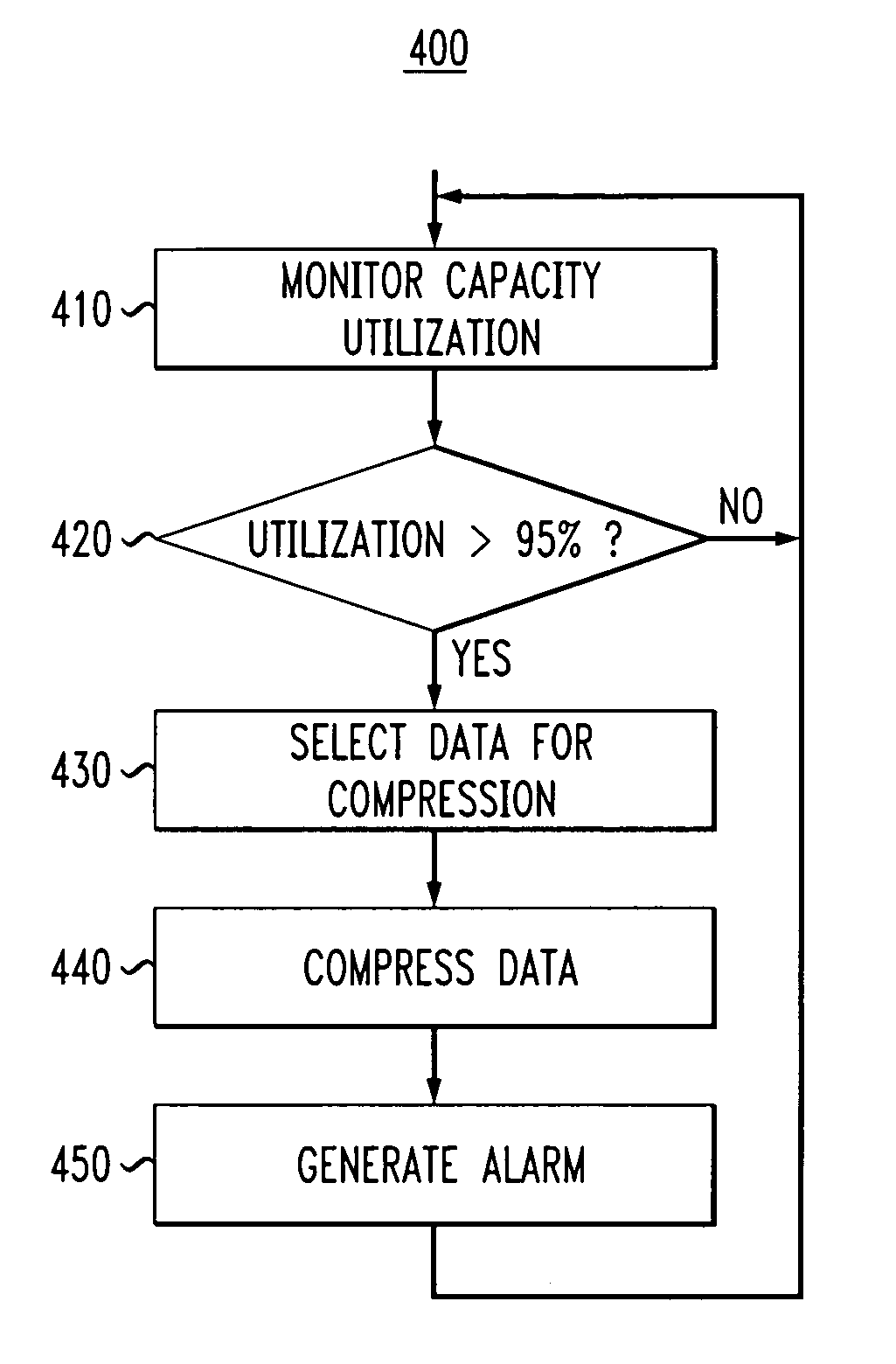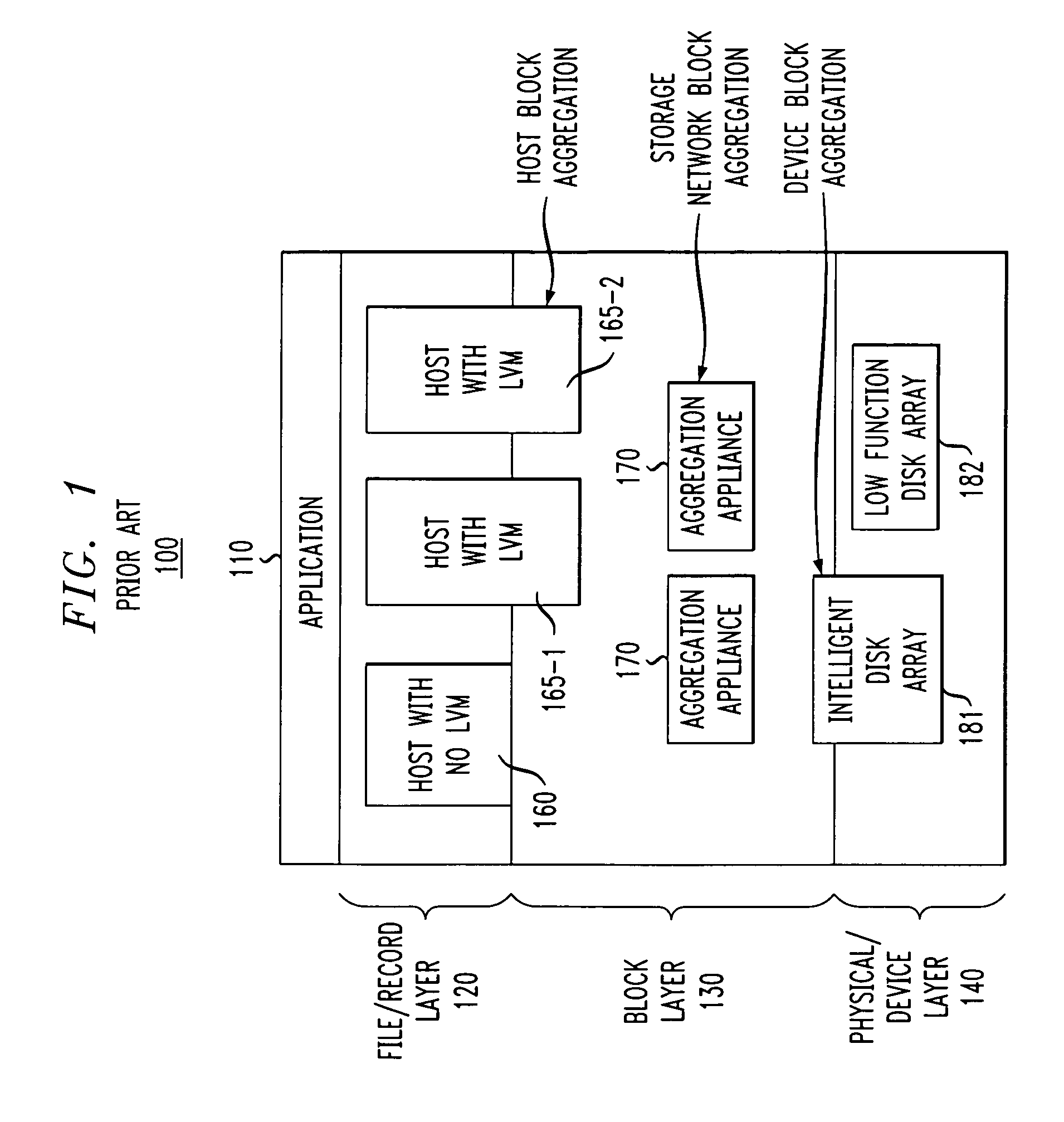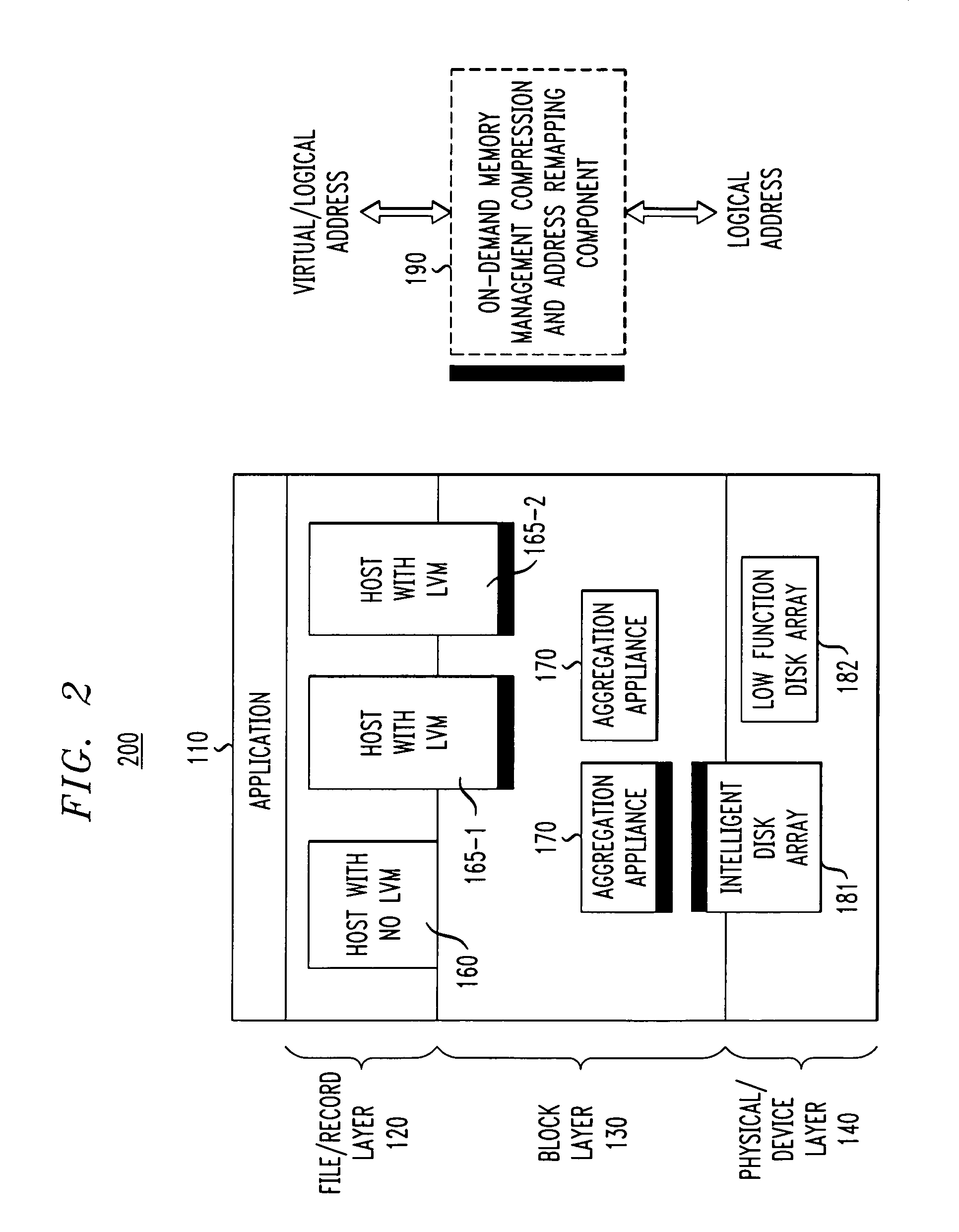Method and apparatus for increasing virtual storage capacity in on-demand storage systems
a technology of virtual storage and storage system, applied in the field of computer storage management, can solve the problems of inefficient utilization of enterprise storage resources, inability to meet the needs of time-critical applications, and increased risk of system resources over-engagement, so as to reduce the utilization of physical storage space, increase virtual storage capacity, and improve the operation of virtual allocation.
- Summary
- Abstract
- Description
- Claims
- Application Information
AI Technical Summary
Benefits of technology
Problems solved by technology
Method used
Image
Examples
Embodiment Construction
[0016] Data compression has been widely used in the prior art as a means to reduce both the storage and transmission capacity requirements of many computer applications. For example, file compression software is widely available for use in Linux and Windows environments (prominent examples of this software include pkzip, winzip, and gzip). Data compression has also been used as part of the Windows and Unix operating systems to transparently compress and store files in designated directories. Data compression hardware has also been integrated with storage device controllers to increase the capacity of physical disk arrays by storing compressed versions of data blocks instead of original blocks. For a general discussion of storage device controllers integrated with compression hardware, see, for example, IBM's RAMAC Virtual Array Controller, IBM Redbook SG24-4951-00, incorporated by reference herein.
[0017] The virtual allocation of storage capacity (also known as late allocation, jus...
PUM
 Login to View More
Login to View More Abstract
Description
Claims
Application Information
 Login to View More
Login to View More - R&D
- Intellectual Property
- Life Sciences
- Materials
- Tech Scout
- Unparalleled Data Quality
- Higher Quality Content
- 60% Fewer Hallucinations
Browse by: Latest US Patents, China's latest patents, Technical Efficacy Thesaurus, Application Domain, Technology Topic, Popular Technical Reports.
© 2025 PatSnap. All rights reserved.Legal|Privacy policy|Modern Slavery Act Transparency Statement|Sitemap|About US| Contact US: help@patsnap.com



